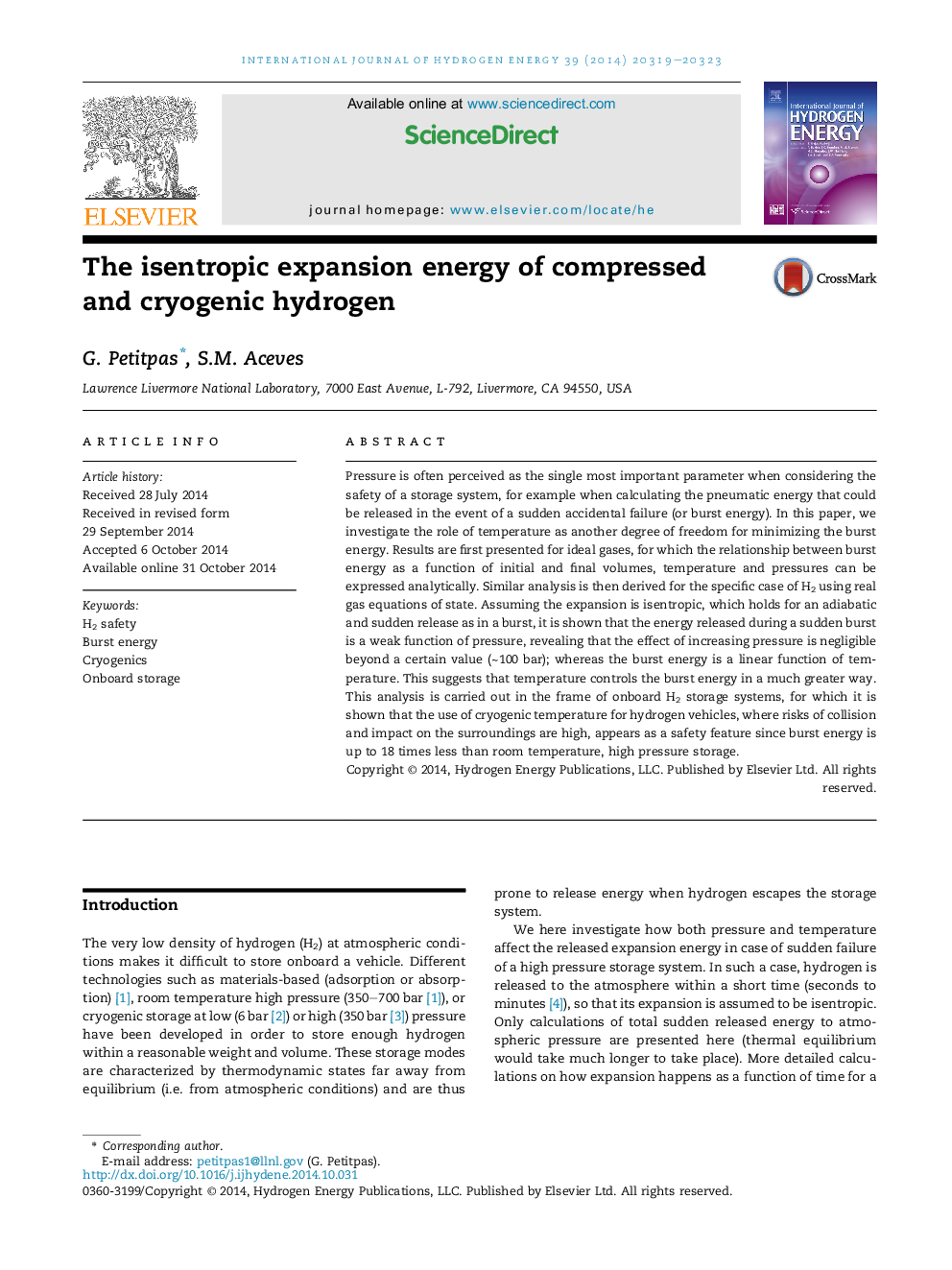| Article ID | Journal | Published Year | Pages | File Type |
|---|---|---|---|---|
| 7717798 | International Journal of Hydrogen Energy | 2014 | 5 Pages |
Abstract
Pressure is often perceived as the single most important parameter when considering the safety of a storage system, for example when calculating the pneumatic energy that could be released in the event of a sudden accidental failure (or burst energy). In this paper, we investigate the role of temperature as another degree of freedom for minimizing the burst energy. Results are first presented for ideal gases, for which the relationship between burst energy as a function of initial and final volumes, temperature and pressures can be expressed analytically. Similar analysis is then derived for the specific case of H2 using real gas equations of state. Assuming the expansion is isentropic, which holds for an adiabatic and sudden release as in a burst, it is shown that the energy released during a sudden burst is a weak function of pressure, revealing that the effect of increasing pressure is negligible beyond a certain value (â¼100Â bar); whereas the burst energy is a linear function of temperature. This suggests that temperature controls the burst energy in a much greater way. This analysis is carried out in the frame of onboard H2 storage systems, for which it is shown that the use of cryogenic temperature for hydrogen vehicles, where risks of collision and impact on the surroundings are high, appears as a safety feature since burst energy is up to 18 times less than room temperature, high pressure storage.
Keywords
Related Topics
Physical Sciences and Engineering
Chemistry
Electrochemistry
Authors
G. Petitpas, S.M. Aceves,
